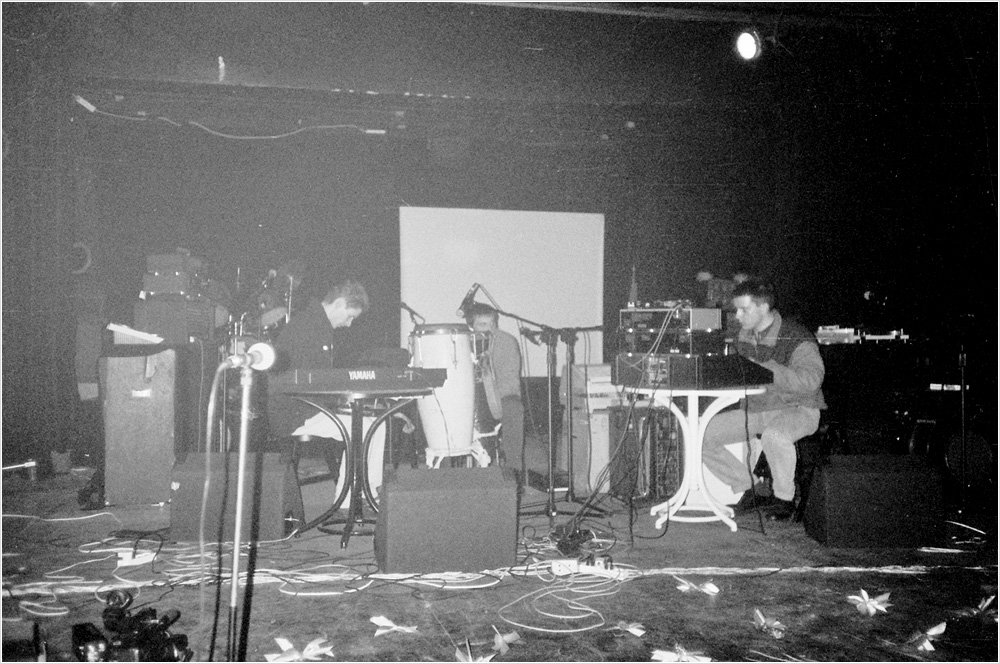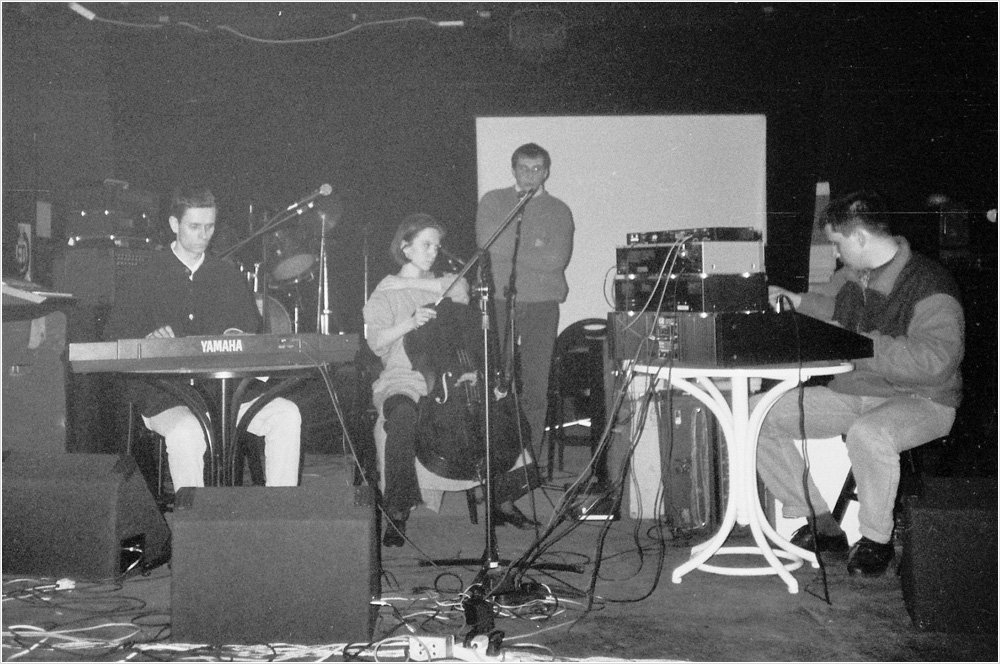Added to cart


Rongwrong
167 | ARCHIVE SERIES 17 | 2018
Heavy, dark, mechanical turnstile knocking you off your feet. Re-edition of the cassette from 1993.
Buy
 RONGWRONG: Marcin Kamieniak, Piotrek Gałczyński, Maciej Piaseczyński. Foto: Rafał Sadowski
RONGWRONG: Marcin Kamieniak, Piotrek Gałczyński, Maciej Piaseczyński. Foto: Rafał Sadowski RONGWRONG + PIES: Marcin Kamieniak, Iza Fik, Piotrek Gałczyński, Maciej Piaseczyński. Foto: Rafał Sadowski
RONGWRONG + PIES: Marcin Kamieniak, Iza Fik, Piotrek Gałczyński, Maciej Piaseczyński. Foto: Rafał Sadowski
RONGWRONG + PIES: Marcin Kamieniak, Iza Fik, Piotrek Gałczyński, Maciej Piaseczyński. Foto: Rafał Sadowski
The photos come from the largest Obuh Records festival, which took place on April 15, 1994 at the Cytryna club in Łódź. That evening, the following groups performed: SCHISTOSOMA, SPEAR, TRYMIGI, RONGWRONG + PIES (coercion of RW musicians with Iza Fik) and ZA SIÓDMĄ GÓRĄ.
Rongwrong was established in 1990 in Lublin on the initiative of the members of Colombes - the post-punk formation by Maciek Piaseczyński, Marcin Kamieniak and Piotr Gałczyński. The name referred to the Dadaist periodical of Marcel Duchamp, published before World War II in New York. The artists' direct inspiration was electroacoustic music and the work of composers from this circle: Pierre Schaeffer, John Cage, Karlheinz Stockhausen, and Eugeniusz Rudnik. They say about themselves: "we’re more artists than musicians. We think of our work as an image of certain states of consciousness. "
A breakthrough for the band was the meeting with Woyck Czern and his legendary Obuh Records record stable. It turned out then that on the outskirts of Poland, in a wonderfully provincial city, forgotten by the gods of pop culture, a publishing house is being created in which unconventional musical ideas can not only be kindled, but also recorded on magically black vinyl records and reach listeners even in distant Japan! It was a miracle!
In ‘92, in the legendary Piwnica Club, located in the ascetic recesses of former monastery buildings from the 19th century, Rongwrong worked hard on the musical material, which resulted in the creation of the first full set of recordings, bearing the name Epiphany. The sound layer was composed of both ambient sounds, recorded on various types of recorders, as well as sounds generated using prepared tape recorders, voicetapes. The rhythm was played by a drum machine, with the keys, guitar, trumpets and flutes in the background.
The initial sound of Rongwrong can be described as heavy, industrial chaos with elements of nostalgic elation, where the distorted voice levitates above the noise of clicks of distorted tapes. During the Epiphany period, they were intrigued by the kinetic art, aesthetics of machines driven by motors or moving by the forces of nature. The next stage of musical exploration began with the recording of Skupiska. This material set a new direction for their activities - electro-acoustic sound collages filled with crafted instruments were created. With time, they turn to a more transparent linear narrative combined with a textual and visual storyline. Then, along the RWR path, an outline of the concept of the history of Alfons Czahor appears. His mysterious figure emerges from the stories of people settling the eastern outskirts of Poland. Folklore - songs, chants and folk stories born over the centuries - come to the workshop. The material recorded on the tapes delights with the diversity of cultural colors. Anna Pajuk took part in the realization of recordings later released by Obuh Records. She sang the longing for the past centuries in Ukrainian dumki. Since 1996, the Rongwrong group and its members have limited their group activity, focusing on individual music and art projects.
In 2005 Maciek Piaseczyński started his adventure with the search for sounds again. This time, Rongwrong has hidden in the recesses of Roztocze forest, carefully listening to the echo of past times…